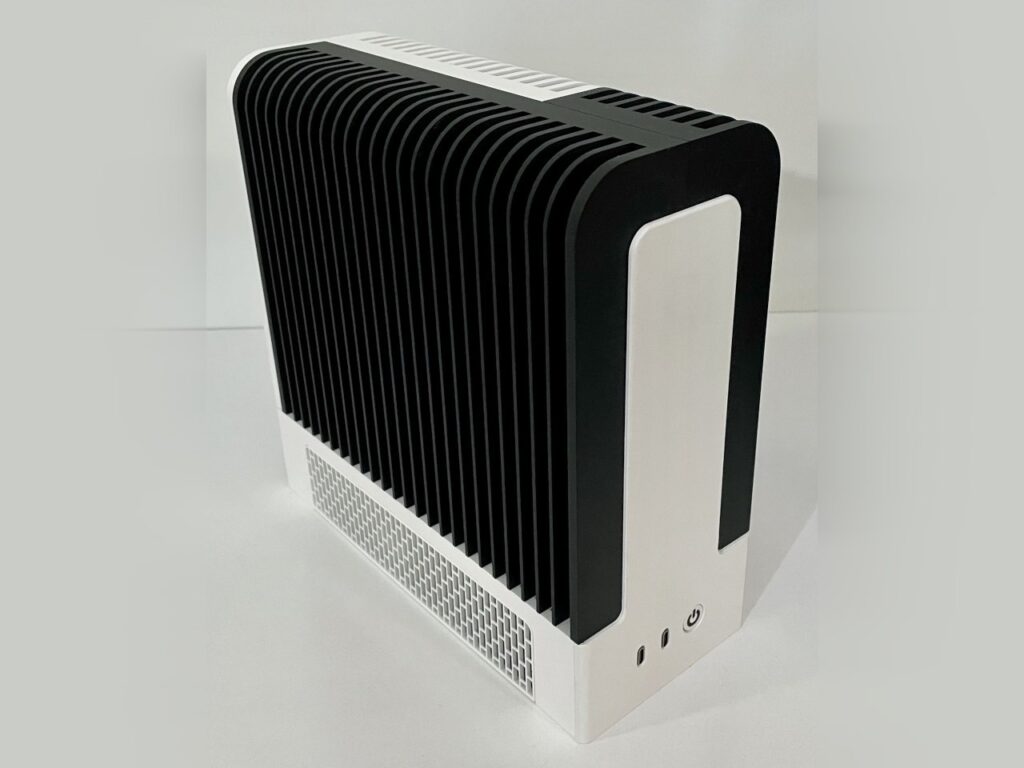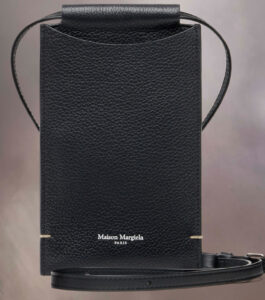In an age of RGB-laden gaming rigs and high-decibel cooling systems, silence has become the ultimate luxury. The Monochrome custom build by modder TheJiral steps into this chaotic soundscape like a monk into a crowded bazaar: calm, composed, and quietly subversive. A desktop computer that operates in total silence is rare enough to turn heads, but Monochrome goes further, offering a striking visual statement paired with an ethos of repairability and minimalist engineering.
A New Philosophy of Silence
For decades, the PC world has fetishized power — more cores, faster clocks, higher frame rates. Cooling solutions have evolved into towering fans, intricate water loops, and elaborate heat dissipation systems that often sound like small jet engines. Against this backdrop, silence is not merely an absence of noise; it’s a manifesto.
Monochrome achieves total silence by abandoning fans altogether. Instead, it employs a passive cooling system integrated into its design. The enclosure itself, crafted through precise 3D printing, acts as a thermal sink, channeling heat away from critical components without the slightest whisper.
The experience of using a completely silent computer is disarming at first. You press the power button, expecting a familiar whir of fans or the rush of air through grilles. Instead, there’s nothing. The screen flickers to life, and for a moment you might think the machine isn’t running at all. Then you realize — this is computing reduced to its purest essence.
A Visual Identity Beyond RGB
While mainstream PC culture often equates innovation with flashy RGB lighting and aggressive, angular designs, Monochrome embraces a different aesthetic vocabulary. The case features a dramatic black-and-white palette — bold yet understated, sharp yet serene.
The enclosure resembles a modernist sculpture, its geometric form suggesting both rigor and fluidity. Here, TheJiral draws on traditions from Bauhaus functionalism to Japanese wabi-sabi minimalism, where form and function are inseparable, and imperfections are celebrated as part of the design’s soul.
The Framework Connection: Modularity Meets Minimalism
At the heart of Monochrome is a surprising choice: a Framework mainboard. Typically found in Framework’s highly acclaimed modular laptops, this board is a testament to a design philosophy centered on repairability and upgradeability.
Framework’s emergence in 2021 marked a seismic shift in the hardware landscape. In an era when most consumer electronics are designed for obsolescence, Framework championed the right to repair and modular upgrades. By integrating a Framework mainboard into a desktop build, TheJiral reinforces this ethos while pushing it into new territory.
This approach means that if a component fails or a future upgrade becomes irresistible, you don’t need to tear apart the entire system or navigate a labyrinth of tiny connections. You simply replace the mainboard — as easily as changing a cartridge. It’s a practical move, but also a philosophical one: a rejection of disposability in favor of longevity and adaptability.
3D Printing: Engineering as Art
The enclosure’s fabrication through 3D printing isn’t just a technical convenience; it’s central to Monochrome’s character. The use of 3D printing in PC case design has become more prominent in recent years, but few projects approach it with such thoughtful integration.
3D printing allows for shapes and structures impossible to achieve through traditional metalworking or injection molding. The latticework ventilation, the precise channels for passive airflow, the subtle texture gradients — all of these features arise directly from the design freedom that additive manufacturing offers.
Moreover, the act of 3D printing connects this build to a broader maker culture — a movement emphasizing DIY ethics, open-source collaboration, and user empowerment. It situates Monochrome within a lineage that includes early hobbyist computer kits, hacker spaces, and the open hardware initiatives of the 21st century.
A Historical Context: The Evolution of Silent Computing
While Monochrome feels cutting-edge, it stands on the shoulders of earlier silent computing experiments. The first fanless PCs emerged in niche markets — medical devices, laboratory instruments, and specialized industrial controls where noise could interfere with sensitive operations.
In the consumer space, efforts to reduce noise began in earnest in the early 2000s, with passive heatsinks and silent power supplies. Companies like Zalman and NoFan explored fanless towers, but these were often bulky, limited in performance, and expensive.
Monochrome transcends these limitations by marrying high performance (thanks to the Framework board’s efficiency) with a stunning, compact design. It redefines silent computing not as a compromise but as a superior, aspirational state.
The Practical User Experience
Silence might seem like a luxury, but it profoundly transforms how we interact with a machine. Without fans ramping up during a heavy load, you can focus completely, whether you’re editing high-resolution photos, designing 3D models, or simply writing in a quiet room.
Thermal performance, often a concern in fanless builds, is meticulously managed in Monochrome through its structural design. The 3D-printed case functions as a passive heatsink, dissipating heat along its precisely engineered fins and channels. During typical use, the system remains comfortably within thermal limits, and even under more demanding tasks, it handles heat gracefully without throttling.
Repairability and Sustainability
Beyond aesthetics and silence, Monochrome makes a powerful statement about sustainability. In a world dominated by planned obsolescence, where tech companies discourage repairs and push for frequent upgrades, Monochrome dares to offer an alternative vision.
The modularity of the Framework mainboard, combined with the customizable 3D-printed shell, means that this computer can evolve over time. Instead of discarding the entire unit when performance becomes outdated, users can upgrade individual parts or refresh the case design.
This commitment to repairability aligns with growing consumer awareness around e-waste and the environmental impact of electronics manufacturing. As legislative initiatives like the European Union’s “Right to Repair” gain momentum, projects like Monochrome show that user-centered design isn’t just possible — it’s desirable.
A New Kind of Status Symbol
Traditionally, high-end desktops have signaled status through raw power, aggressive lighting, and elaborate water-cooling loops. Monochrome flips this script. Its status comes not from spectacle but from refinement, not from loudness but from quiet confidence.
In a sense, Monochrome resembles a luxury mechanical watch or a minimalist high-fidelity audio system. It appeals to those who value craftsmanship, longevity, and understated elegance over ostentation. In an age of constant noise — literal and metaphorical — silence itself becomes the ultimate flex.
Community and TheJiral’s Influence
The modding community has long celebrated creative, boundary-pushing projects, but Monochrome stands out even in this innovative sphere. TheJiral, known for prior high-concept builds, has cultivated a reputation for merging art and engineering.
Through social media and maker forums, Monochrome has inspired countless enthusiasts to consider fanless builds and modular designs. Tutorials, detailed build logs, and 3D printing files shared by TheJiral empower others to adapt or iterate on the concept.
This openness reflects a broader shift in maker culture — from showcasing finished products as trophies to treating them as starting points for community innovation.
Impression
Monochrome isn’t just a beautiful object; it’s a signpost pointing to a potential future. As CPUs and GPUs become more efficient, the dream of high-performance, fully silent computers inches closer to mainstream reality.
Moreover, modular approaches like Framework’s, originally intended for laptops, could redefine desktop standards. Imagine a future where desktop cases become timeless enclosures, updated with new internal boards rather than replaced wholesale.
Monochrome shows that the desktop computer doesn’t need to be a disposable commodity or a garish status symbol. Instead, it can be an heirloom — evolving, adaptable, and deeply personal.
Final
In the Monochrome build, we see a quiet revolution — a reclaiming of what it means to engage with technology. It invites us to slow down, to savor each interaction, and to consider the broader implications of our consumption choices.
It is a work of art as much as a piece of hardware, embodying a philosophy that values longevity, repairability, and aesthetic coherence over shallow novelty. By bringing together the silent grace of fanless cooling, the adaptability of modular design, and the expressive potential of 3D printing, Monochrome offers not just a new kind of PC, but a new vision for how we might live with our machines.
In a culture driven by speed and spectacle, Monochrome reminds us of the power of stillness. It whispers where others scream, and in that whisper, it challenges us to rethink everything we thought we knew about computing.
No comments yet.









